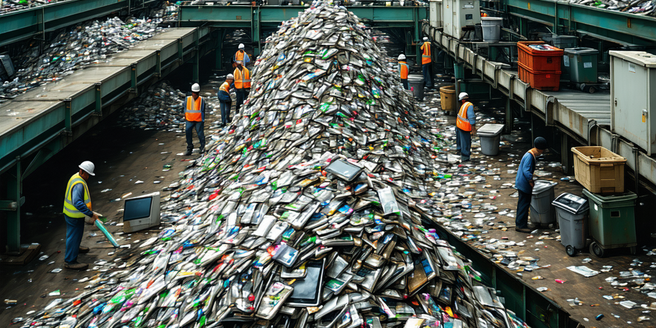E-waste Management In Electronics

Understanding the Impact of E-Waste on the Environment
E-waste, or electronic waste, poses significant environmental challenges due to the hazardous materials it contains. Heavy metals like lead, mercury, and cadmium, found in electronic items, can leach into the soil and contaminate water sources, affecting plant and animal life. Improper disposal and irresponsible recycling practices exacerbate these issues, releasing toxic substances into the air. Moreover, e-waste takes centuries to decompose, clogging landfills and contributing to environmental degradation. Addressing the impact of e-waste necessitates a collective effort from manufacturers, consumers, and policymakers to adopt more sustainable practices. Education and awareness about proper e-waste disposal can also play a pivotal role in minimizing its environmental footprint. Nations worldwide are urged to develop stricter regulations to manage e-waste effectively, safeguarding ecosystems and promoting public health.
Strategies for Reducing E-Waste in Electronics Manufacturing
Reducing e-waste in electronics manufacturing is pivotal to sustainable industry practices. One effective strategy is adopting a circular economy model, which encourages recycling, redesigning, and reusing materials. Manufacturers can prioritize eco-design, creating products with longer lifespans and employing biodegradable components. Implementing take-back programs allows consumers to return end-of-life electronics, facilitating responsible recycling and reducing landfill contributions. Transparency in supply chains ensures that raw materials are sourced responsibly, minimizing environmental harm. Additionally, embedding energy-efficient practices aids in reducing overall waste production. Collaborations between industry stakeholders, environmental groups, and governments are essential for developing innovative solutions and setting industry standards. Through these concerted efforts, the electronics industry can significantly minimize its e-waste generation, paving the way for a more sustainable future and preserving natural resources.
Recycling and Disposal Techniques for Old Electronics
Recycling and proper disposal of old electronics play a crucial role in addressing e-waste challenges. Effective recycling techniques involve disassembling devices to extract valuable components like gold, silver, and copper, preventing depletion of these precious metals. Many countries have established e-waste collection centers where individuals can drop off unwanted electronics for safe recycling. Innovations in recycling technology, such as automated sorting systems, enhance the efficiency of processing electronic waste. Ensuring that e-waste does not end up in landfills involves educating consumers about the importance of proper disposal and providing convenient recycling options. Additionally, manufacturers can design products with recycling in mind, simplifying the breakdown process. By integrating these techniques, we can mitigate the harmful effects of e-waste, conserve natural resources, and promote a more sustainable electronic consumption culture.
The Role of Legislation in E-Waste Management
Legislation plays a vital role in effective e-waste management, providing a structured framework for handling electronic waste responsibly. Governments worldwide are enforcing regulations that mandate proper collection, recycling, and disposal of e-waste. These laws aim to minimize environmental damage and ensure public safety by controlling hazardous substances. Producer responsibility policies require electronic manufacturers to handle their products’ end-of-life management, encouraging sustainable product designs. International treaties, such as the Basel Convention, facilitate the global trade of e-waste by setting legal standards to prevent the illegal dumping of waste in developing countries. Legislative measures also promote awareness and education, compelling stakeholders to engage in environmentally friendly practices. Through robust regulations and enforcement, governments can significantly reduce the environmental and health impacts associated with e-waste, fostering a culture of accountability and sustainability.
Future Innovations in Sustainable Electronics Design
The future of sustainable electronics design is brimming with innovations aimed at reducing environmental impact. Engineers are developing biodegradable gadgets and components that decompose naturally, minimizing landfill waste. Modular electronics, allowing easy upgrades and repairs, extend product lifespans, reducing the need for frequent replacements. Advanced material science is paving the way for non-toxic, easily recyclable materials, reducing harmful chemical use. Incorporating AI in design processes optimizes resource use and minimizes production waste. Moreover, the rise of renewable energy-powered electronics supports carbon footprint reduction. Collaborative research among academia, industry, and government bodies is crucial to foster breakthroughs in sustainable design. Through investment in these cutting-edge solutions, the electronics industry can lead the charge in environmental stewardship, ensuring a future where technology and sustainability coexist harmoniously, benefiting both consumers and the planet.